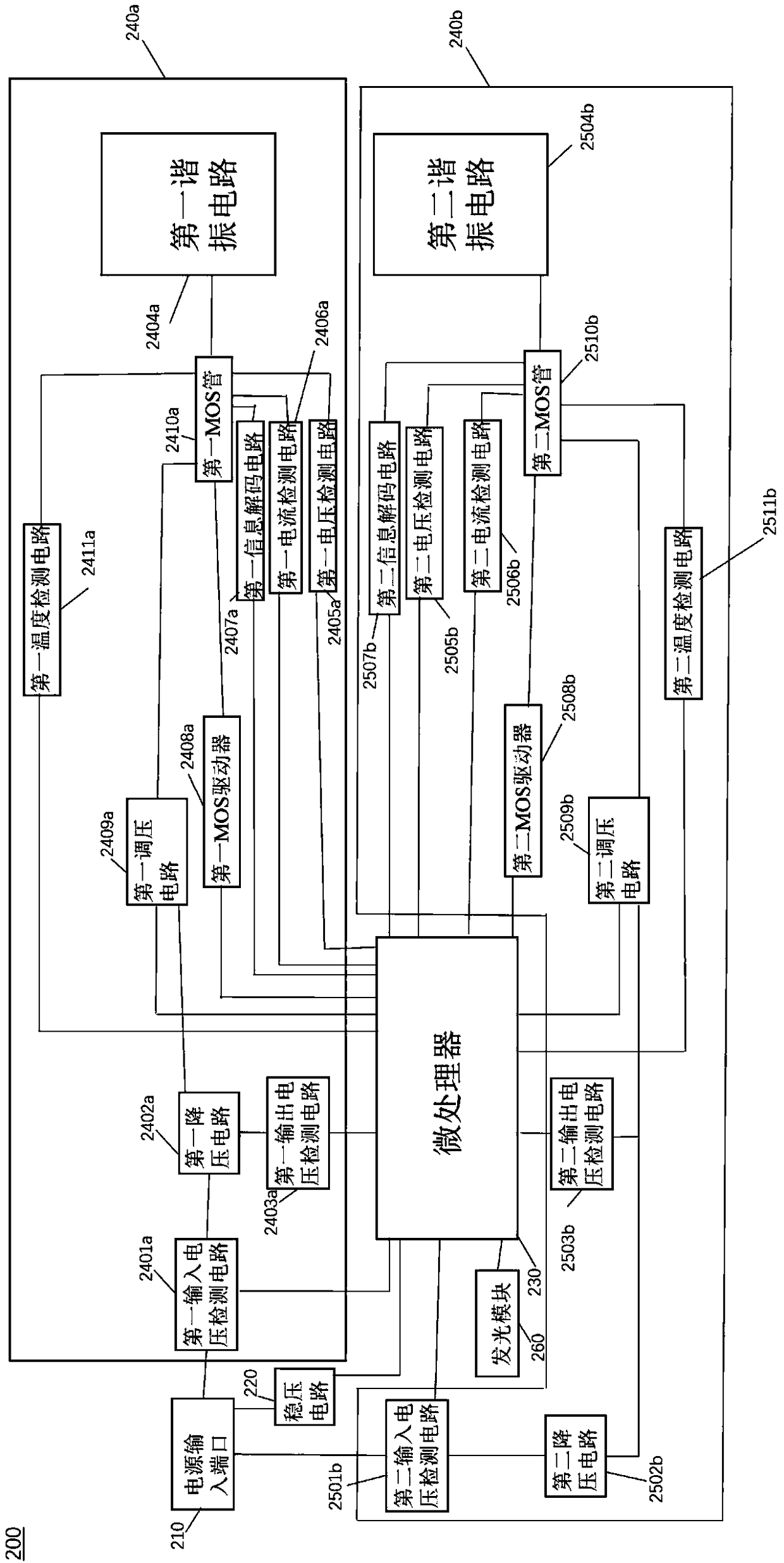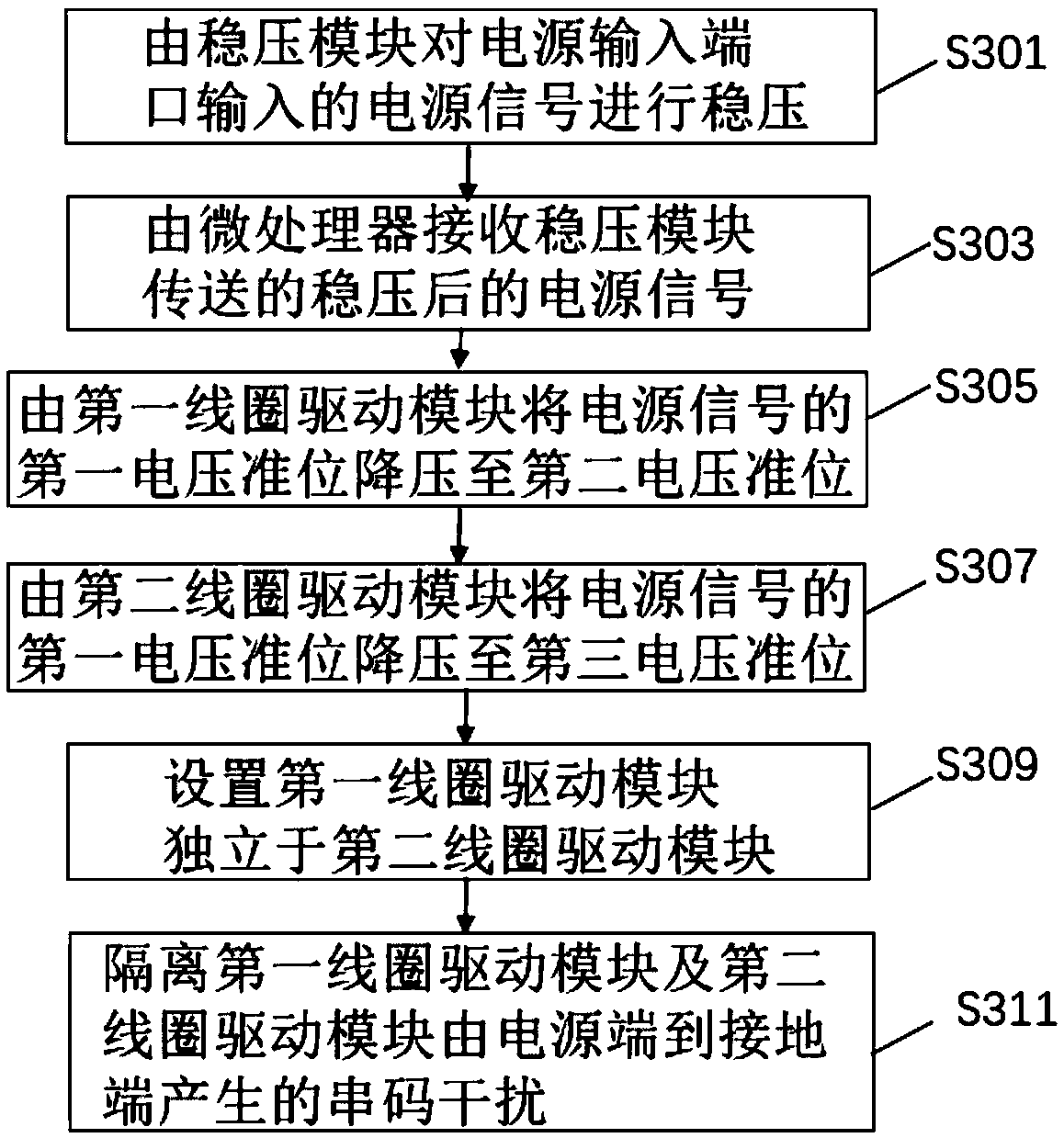Multi-coil wireless charging system and method
A wireless charging and coil technology, applied in electrical components, circuit devices, etc., can solve problems such as excessive wiring harnesses, mutual interference of signals, and waste of cost.
- Summary
- Abstract
- Description
- Claims
- Application Information
AI Technical Summary
Problems solved by technology
Method used
Image
Examples
Embodiment 1
[0070] see figure 1 , figure 1 It is a schematic block diagram of a wireless charging system (hereinafter referred to as "wireless charging system") provided by Embodiment 1 of the present invention. The wireless charging system 100 includes a power input port 110 , a voltage stabilizing circuit 120 , a microprocessor 130 , a first coil driving module 140 a and a second coil driving module 140 b. Wherein, the power input port 110, the voltage stabilizing circuit 120, the microprocessor 130, the first coil driving module 140a and the second coil driving module 140b can be arranged in the same integrated circuit.
[0071] The voltage stabilizing circuit 120 is electrically connected to the power input port 110 and the microprocessor 130 . For example, the power input port 110 can be a USB port, a micro USB port or a C-type port. The voltage stabilizing circuit 120 stabilizes the voltage of the power signal input from the power input port 110 . The microprocessor 130 receives...
Embodiment 2
[0077] see figure 2 , figure 2 It is a schematic block diagram of a wireless charging system (hereinafter referred to as "wireless charging system") provided by Embodiment 2 of the present invention. The wireless charging system 200 includes a power input port 210 , a voltage stabilizing circuit 220 , a microprocessor 230 , a first coil driving module 240 a , a second coil driving module 240 b and a light emitting module 260 .
[0078] The first coil driving module 240a includes a first input voltage detection circuit 2401a, a first step-down circuit 2402a, a first output voltage detection circuit 2403a, a first resonance circuit 2404a, a first voltage detection circuit 2405a, a first current detection circuit 2406a, The first information decoding circuit 2407a, the first MOS driver 2408a, the first voltage regulation module 2409a, the first MOS transistor 2410a and the first temperature detection circuit 2411a.
[0079] The second coil drive module 240b includes a second ...
Embodiment 3
[0101] see image 3 , image 3 It is a flow chart of a method for providing a multi-coil wireless charging method (hereinafter referred to as "wireless charging method") in Embodiment 3 of the present invention. Wireless charging methods include:
[0102] S301. Stabilize the voltage of the power signal input from the power input port by the voltage stabilizing circuit;
[0103] S303. The microprocessor receives the regulated power signal transmitted by the voltage stabilizing circuit;
[0104] S305. Step down the first voltage level of the power signal to the second voltage level by the first coil driving module;
[0105] S307. Step down the first voltage level of the power signal to the third voltage level by the second coil driving module;
[0106] S309, setting the first coil driving module to be independent from the second coil driving module;
[0107] S311. Isolate the serial code interference generated from the power terminal to the ground terminal of the first coil...
PUM
 Login to View More
Login to View More Abstract
Description
Claims
Application Information
 Login to View More
Login to View More - R&D
- Intellectual Property
- Life Sciences
- Materials
- Tech Scout
- Unparalleled Data Quality
- Higher Quality Content
- 60% Fewer Hallucinations
Browse by: Latest US Patents, China's latest patents, Technical Efficacy Thesaurus, Application Domain, Technology Topic, Popular Technical Reports.
© 2025 PatSnap. All rights reserved.Legal|Privacy policy|Modern Slavery Act Transparency Statement|Sitemap|About US| Contact US: help@patsnap.com



